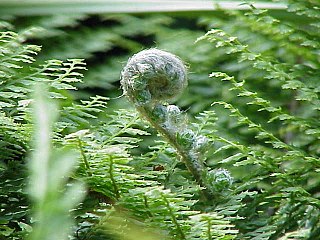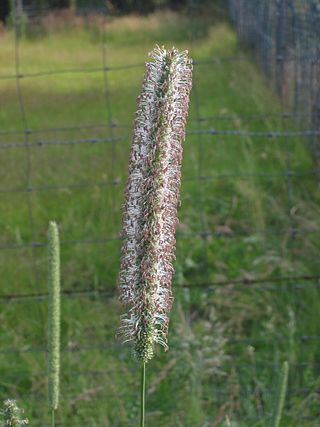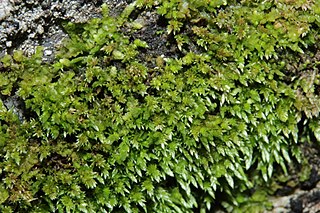| Bryobeckettia | |
|---|---|
| Scientific classification | |
| Kingdom: | Plantae |
| Division: | Bryophyta |
| Class: | Bryopsida |
| Order: | Funariales |
| Family: | Funariaceae |
| Genus: | Bryobeckettia A.J.Fife, 1985 |
Bryobeckettia is a genus of mosses belonging to the family Funariaceae. [1]
| Bryobeckettia | |
|---|---|
| Scientific classification | |
| Kingdom: | Plantae |
| Division: | Bryophyta |
| Class: | Bryopsida |
| Order: | Funariales |
| Family: | Funariaceae |
| Genus: | Bryobeckettia A.J.Fife, 1985 |
Bryobeckettia is a genus of mosses belonging to the family Funariaceae. [1]

Botrychium is a genus of ferns, seedless vascular plants in the family Ophioglossaceae. Botrychium species are known as moonworts. They are small, with fleshy roots, and reproduce by spores shed into the air. One part of the leaf, the trophophore, is sterile and fernlike; the other, the sporophore, is fertile and carries the clusters of sporangia or spore cases. Some species only occasionally emerge above ground and gain most of their nourishment from an association with mycorrhizal fungi.

Cineraria is a genus of flowering plants in the sunflower family, native primarily to southern Africa with a few species farther north. The genus includes herbaceous plants and small subshrubs.
Pseudagrostistachys is a plant genus of the family Euphorbiaceae first described as a genus in 1912. It is native to tropical Africa.
Sphaerostylis is a genus of plant of the family Euphorbiaceae first described as a genus in 1858. The entire genus is endemic to Madagascar.

Falconeria is a monotypic plant genus in the family Euphorbiaceae, first described as a genus in 1839. The genus is sometimes included within the genus Sapium. The sole species is Falconeria insignis. The plant is found from India, Nepal, Bangladesh, and Sri Lanka to Indochina, China, Thailand and Peninsular Malaysia.
Hypericum sect. Thornea is a small section of flowering plants in the genus Hypericum. It was formerly treated as a separate genus, Thornea. There are two species in the section, Hypericum calcicola and Hypericum matudae.

Polystichum is a genus of ferns in the family Dryopteridaceae, subfamily Dryopteridoideae, according to the Pteridophyte Phylogeny Group classification of 2016. The genus has about 500 species and has a cosmopolitan distribution. The highest diversity is in eastern Asia, with about 208 species in China alone; the region from Mexico to Brazil has at least 100 additional species; Africa, North America, and Europe have much lower diversity. Polystichum species are terrestrial or rock-dwelling ferns of warm-temperate and montane-tropical regions. They are often found in disturbed habitats such as road cuts, talus slopes, and stream banks.

Phleum (timothy) is a genus of annual and perennial plants in the grass family. The genus is native to Europe, Asia and north Africa, with one species also in North and South America.

The Diocese of St Andrews, Dunkeld and Dunblane is one of the seven dioceses of the Scottish Episcopal Church, part of the Anglican Communion. It is centred on St Ninian's Cathedral in Perth, and covers Fife, Perthshire, Kinross-shire, Clackmannanshire, and eastern and central Stirlingshire. The current Bishop of St Andrews, Dunkeld and Dunblane is Ian Paton.
Gyrocaryum is a genus of plant in family Boraginaceae. It contains a single species, Gyrocaryum oppositifolium, which is endemic to Spain.
Acomis is a genus of flowering plants in the family Asteraceae described as a genus in 1867. The entire genus is endemic to Australia. It was first described and published in Fragm. Vol.2 on page 89 in 1860.
Theodor Carl (Karl) Julius Herzog was a German bryologist and phytogeographer. This botanist is denoted by the author abbreviation Herz. when citing a botanical name.

Triantha is a small genus of flowering plants in the family Tofieldiaceae, first described as a genus in 1879. False asphodel is a common name for plants in this genus.

Irvingia is a genus of African and Southeast Asian trees in the family Irvingiaceae, sometimes known by the common names wild mango, African mango, bush mango, dika, mbukpap uyo or ogbono. They bear edible mango-like fruits, and are especially valued for their fat- and protein-rich nuts.

Maundia is a genus of alismatid monocots, described in 1858. Maundia was formerly included in the family Juncaginaceae but is now considered to form a family of its own under the name Maundiaceae. It contains only one known species, Maundia triglochinoides, endemic to Australia.

Almut Gitter Jones was a German-American botanist, mycologist, and plant taxonomist known for her work researching the genus Aster, as well as for her work as curator of the herbarium at the University of Illinois.

Leucodon is a genus of mosses belonging to the family Leucodontaceae.

Anomobryum is a genus of mosses belonging to the family Bryaceae.

Climacium is a genus of mosses belonging to the family Climaciaceae. The species of this genus are found in Eurasia, North America, and Australia.
Periclesia is a monotypic genus of flowering plants belonging to the family Ericaceae. It only contains one known species, Periclesia flexuosaA.C.Sm. It is also with the Vaccinioideae subfamily and the Vaccinieae tribe.